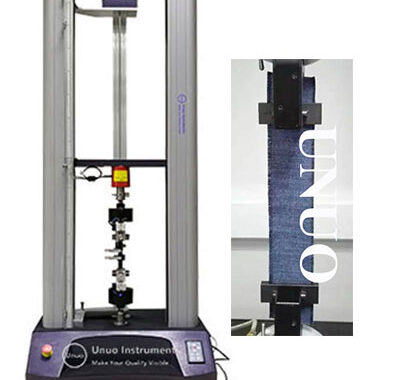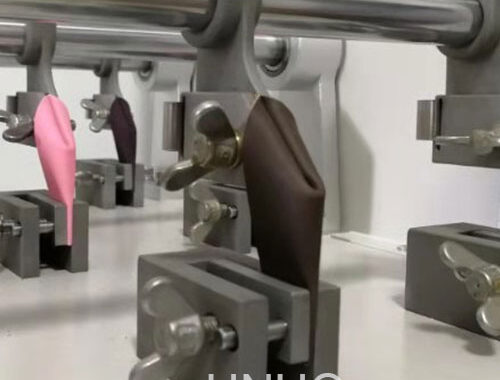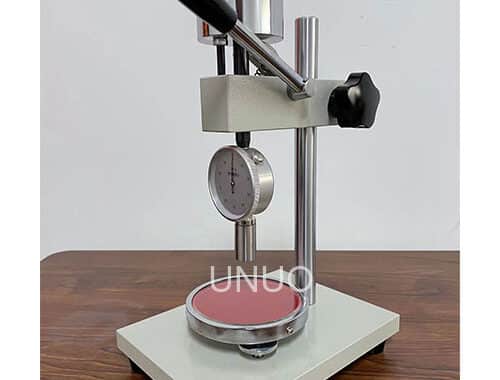This post would mainly focus on the Tensile Strength Of Fabric - Breaking force and elongation…
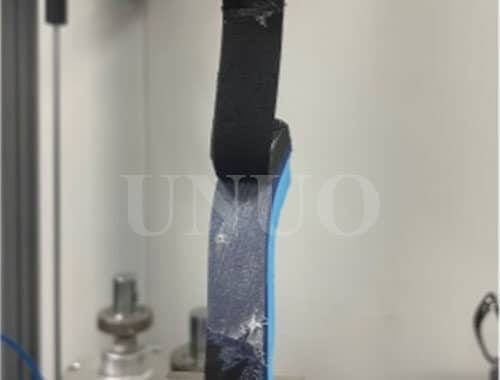
Peel Strength Of Footwear Sole Bonds
Peel Strength Of Footwear Sole Bonds
Peel strength test of sole and upper is important for shoe. The test methods include ISO 17708, SATRA TM411, QB/T 2886, ISO 20344 and etc.
1. Peel strength test apparatus and tools:
- Sharp knife;
- Caliper;
- Tensile strength tester, also called as universal testing machine; (meets ISO 7500-1); Speed (100±10)mm/min, capacity 0 to 600N, clamps width 25-30mm, with auto force record function.
2. Pre-condition before the test:
Place the shoe in (23±2)℃, (50±5)%RH for 24h. This purpose is to prevent the failure of the test due to insufficient adhesion after the whole shoe is produced.
3. Sample preparation:
Choose the test method according to shoe making method. The commonly used shoe peel strength test methods are the A, B, C method of the test standards. For the upper surface adhered to the outsole, and the outsole has an extended edge that can be clamped by the fixture, select type A. SATRA TM411 requires a sample width of 30mm, and ISO17708/ QB/T2886/ ISO20344-5.2 requires a sample width of 25mm. Option type B where the outsole is not extended and there is no dimpled outsole. Choice type C where the outsole is recessed and the edge of the outsole rises above the sole. The size of the B/C type sample is 10mm in width and not less than 50mm in length. The sample cutting position is required to be at the sole joint.

Use the servo motor driven Universal testing machine to conduct the test, and set the auto recorder of the average force of the peel range, peel strength = Avg. Force of peel/sample average width(N/mm).
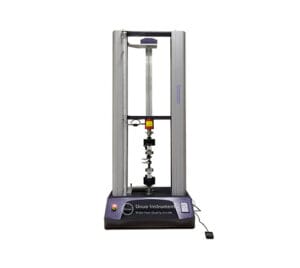
Unuo Instruments’s UTM is 100% matching to the peel strength’s requirement. Our universal testing machine adopts servo motor to accurately drive the synchronous wheel deceleration mechanism and synchronously transmits to the ball screws on both sides to realize the fast and precise movement of the beam, and feeds back to the central data processing system to display the results to the operating system. When the beam moves, the force generated by the fixture on the sample is accurately and quickly fed back to the central data processing system through the imported force sensor, and the results are displayed on the operating system in time. Such a fast, precise, and feedback processing system constitutes a servo tension machine.
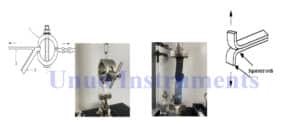
It also has the key feature of an advanced operating system, not just a single simple action of stretching up or compressing down, it can also achieve fatigue tests of reciprocating stretching\compression\holding pressure, etc. You can also choose different fixtures to realize the function, and customize the use conditions of 500kg, 1T, 2T, and 5T according to customer needs. It is suitable for rubber, plastic products, shoe materials, textiles, cords and other products.

